Decoupage boxes: ideas and workshops
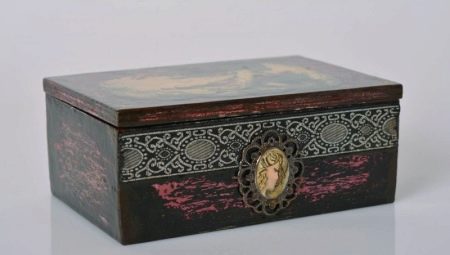
Decoupage is one of the ancient trends in design, based on attaching cut pieces of paper, fabric, leather to some base, followed by painting and varnishing. With its help, you can decorate interior items, furniture, make a souvenir or a holiday gift.
This technique is used to decorate and beautify products made of wood, ceramics, fabrics, leather, metal. It is used in the manufacture of exclusive accessories, designer handbags, hats, clothes, dishes, boxes.

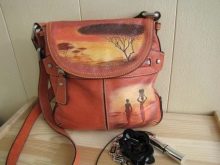

Style selection
There are many different trends and styles in decoupage. Let's take a look at some of them.
- Provence - it is characterized by delicate floral patterns, elements of rural landscapes, nature, soft pastel colors. Born in France.
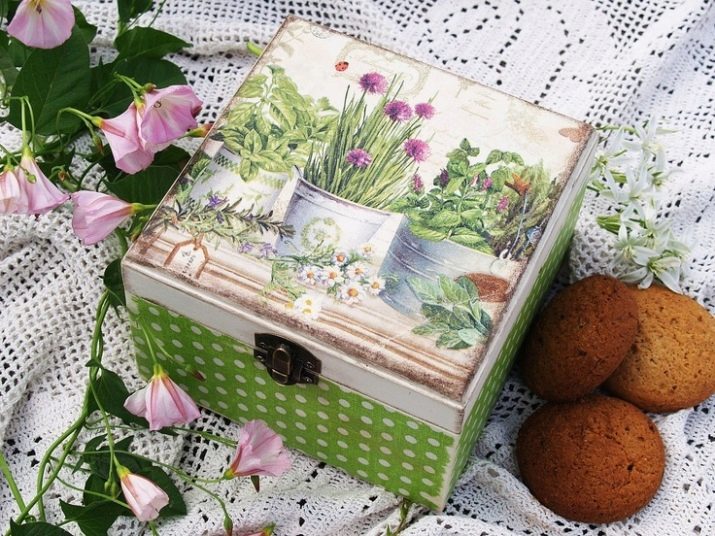
- Vintage - it is used more often on wooden objects. With the help of a special technique of applying dark and light colors of different shades, vintage products "age".

- Victorian style. Reminiscent of Victoria's England. Its goal is to give the product a luxurious, antique look, antique. The main colors are dark, saturated, with gilding. The motives are lush bouquets, girls in beautiful old clothes, angels.
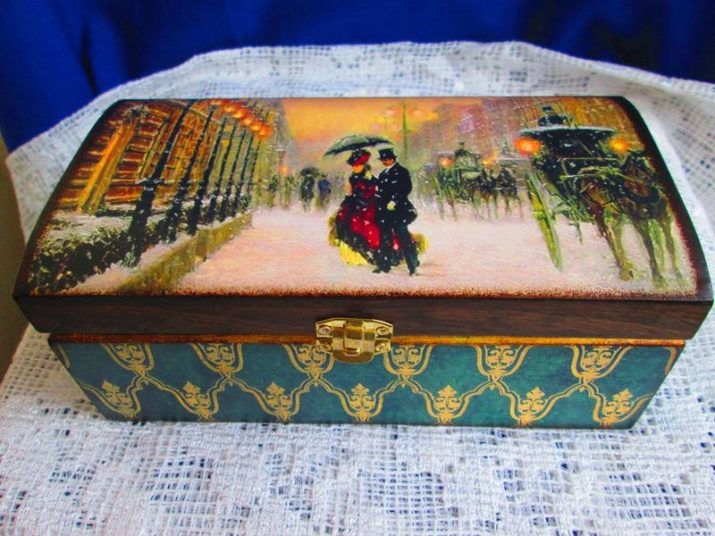
- Country or Rustic - differs in simplicity, restraint in details, comfort. Pictures depicting pets, plants, fruits are used. The colors are calm.

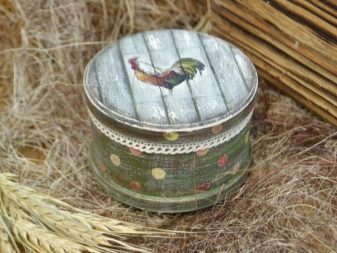
- Shabby chic - a very young style, appeared at the end of the 20th century. The name can be translated as "shabby chic". It is carried out in light colors, and abrasions are applied with dark ones. One of the motives is roses.

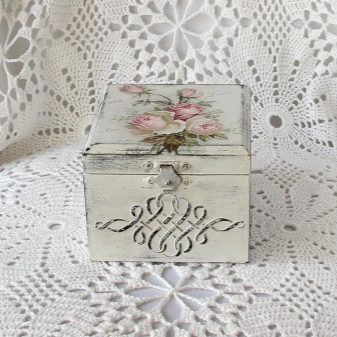
- Simplicity - text, clippings from magazines or newspapers are used as images.The dominant color is white; light, as if covered with a haze gamut. All colors are usually of the cold spectrum. Implies nobility and restraint, "aging".
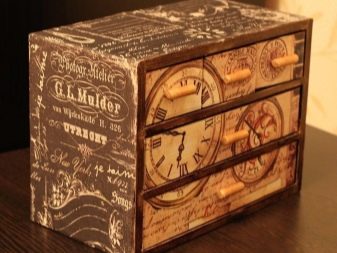
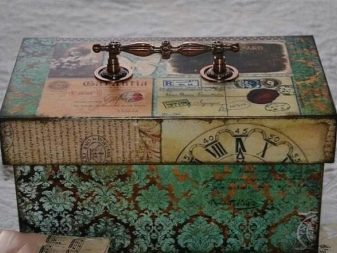
- Military - as the name implies, military themes are used in the style (weapons, camouflage, khaki, metal elements). The motives of striving for peace are often used here.
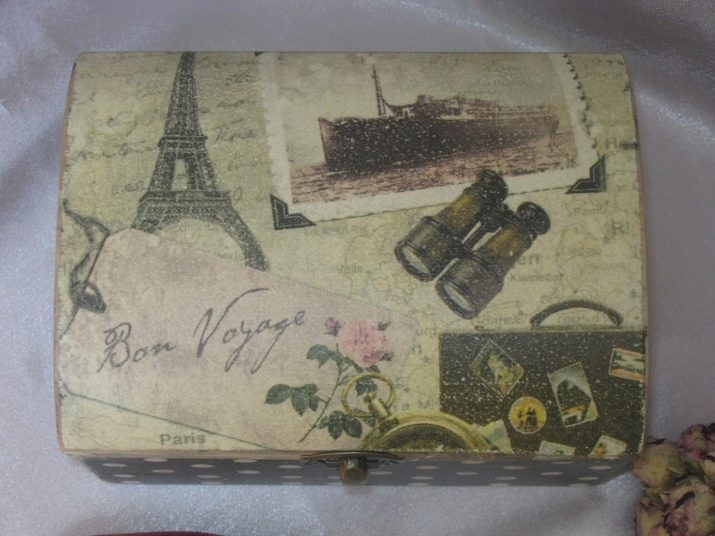
- Ethno - includes elements of everyday life, culture, national clothes of various peoples. These can be items in the East, African, Indian and other directions. Drawings range from simple, primitive to complex ornaments and compositions.
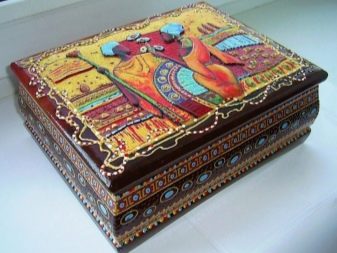
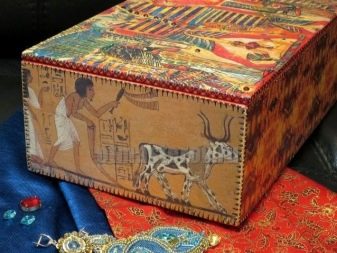
Preparation
After the style of the future project has been determined, you can start preparing and purchasing the necessary tools.
It is better to work with small items, gradually moving, as they say, from simple to complex, for example, to decorate a small wooden box.
You can take an old one that has already "survived", or you can buy a new blank in a specialized store.
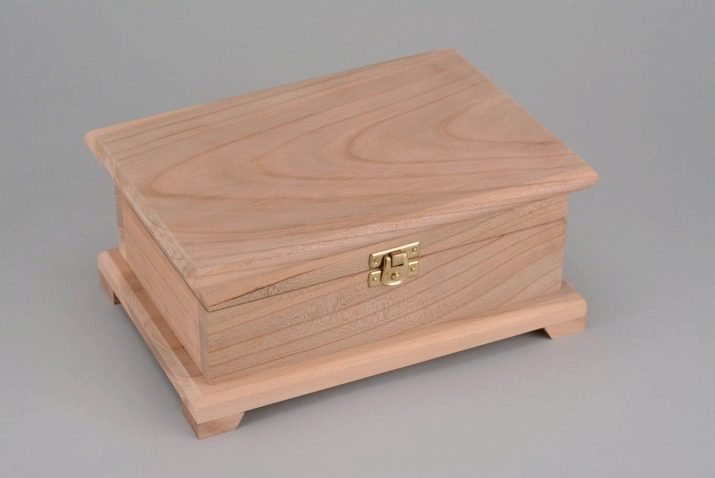
The following materials will be required:
- PVA glue or decoupage glue;
- texture paste - with its help you can create a volumetric relief pattern;
- decoupage napkins with matching patterns;
- sandpaper;
- various blanks, decoration elements;
- polymer clay (self-setting);
- scotch tape - to fix any details;
- screwdriver;
- acrylic varnish of the desired shade;
- water-based paints, colors depending on the chosen style;
- acrylic primer;
- wax candle;
- cardboard - used for the manufacture of various patterns, patterns.
The list needs to be clarified, adjusted depending on the technique, style in which it is planned to make the box. In any case, you must first prepare it: if necessary, wipe it, remove the old paint, use a screwdriver to remove decorative elements, locks, handles, hinges.
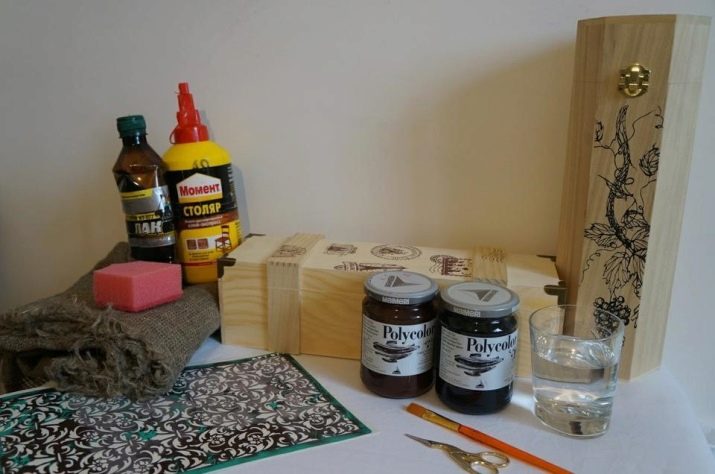
Master classes
To make an original gift or an unusual thing for the house using the decoupage technique with your own hands, you need to study the technology. At first, this may seem too complicated and incomprehensible.
However, if you accurately and accurately follow the recommendations and advice of experienced craftsmen, everything will definitely work out. In the information below, we will consider step by step, in detail, the details and subtleties of this art.
After the box is cleaned of paint and unnecessary parts, the most interesting thing begins - the creative process. It includes several stages.
- Sanding the entire surface with sandpaper. The more thoroughly this work is carried out, the better and better the result will be.
- Then paint is applied to the wood, the color is selected in accordance with the selected project. If necessary, repeat the operation several times. Wait until dry. This stage is called toning.
- The next moment is transfer of prepared images to the box. Its implementation will require attention and accuracy. For this purpose, decoupage napkins are used, in stores, complete with them, instructions are sold, which describes in detail how to separate the drawing from the paper.
- Apply the selected drawing to a specific place, straighten, and then with a thin brush apply glue. Make sure that there are no misalignments and folds. When the first layer is dry, repeat the procedure.
- Further, if you wish, you can combine paper pictures with relief from textured paste, polymer clay figurines, shells or other elements. Just attach them with glue wherever you want.
- The dried surface of the box is varnished in several layers, each time waiting until the previous one dries up.
- And the very last thing - fix corners, locks, handles, loops.
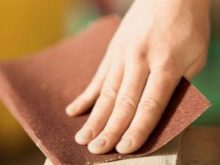
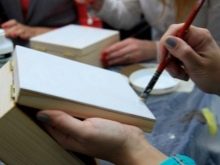
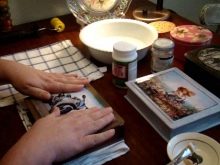
These are, so to speak, the general steps that need to be taken in the decoupage technique. Each style also has its own nuances and features. For example, to create abrasions and an aging effect in shabby chic and vintage styles, already painted products are again processed with sandpaper, wax is applied to the edges.
Then they are covered with paint of a darker or lighter shade, so that the bottom layer is slightly visible, which will create the appearance of prolonged use of the thing, as if the paint has worn off a little.
For the same purpose, at the very end of the work, when the last, top layer of varnish has dried, the product is treated with wax.
Lush and flamboyant Victorian objects can be waxed with a candle to look the same as an old polished parquet floor.
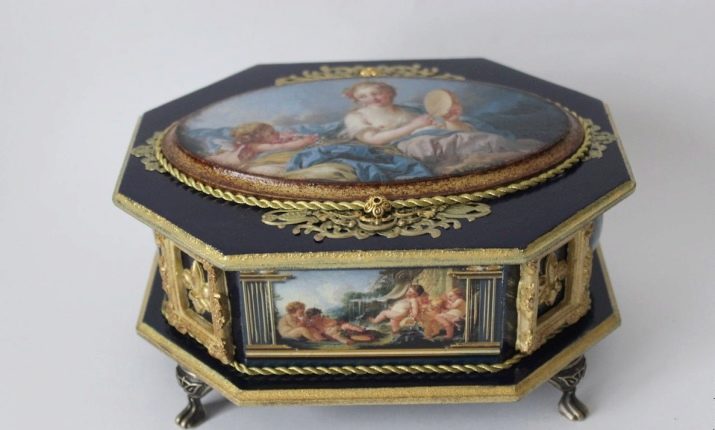
A book-box with a carved lid looks very interesting and beautiful. To make it, you will need a piece of wood in the form of a thick book. To make an imitation of sheets, the sides and the front part are lightly treated with an iron brush after staining.
Then, a stencil is tightly fixed on the top cover, a texture paste is applied to it - it is convenient to do this with a small spatula or a small plate made of a thin dense material. It is necessary to ensure that there are no displacements, otherwise the patterns will turn out to be smeared. At the end of the work, the stencil is carefully removed, the excess paste is cleaned with a cloth.
They start decorating the second cover after the first one is completely dry. The spine of the book is also processed.
When the workpiece is dry, you can walk a little over it with sandpaper to smooth and smooth it. Next, the outer surface of the box is covered with acrylic primer, light or dark, depending on the chosen project, allowed to dry, then proceed to the final painting. Here you can give free rein to imagination.
For example, to obtain a malachite-like surface, a white paint slightly diluted with water is applied to a black primer base. Blot immediately with a dry cloth. After drying, they are also painted green.
When everything is dry, 2-3 thin layers of transparent varnish are applied to the box. The inside can be painted in any color, pasted over with patterned paper, fabric, velvet. That's all. The work is done. It remains, if desired, to glue the metal corners and add a little gilding.
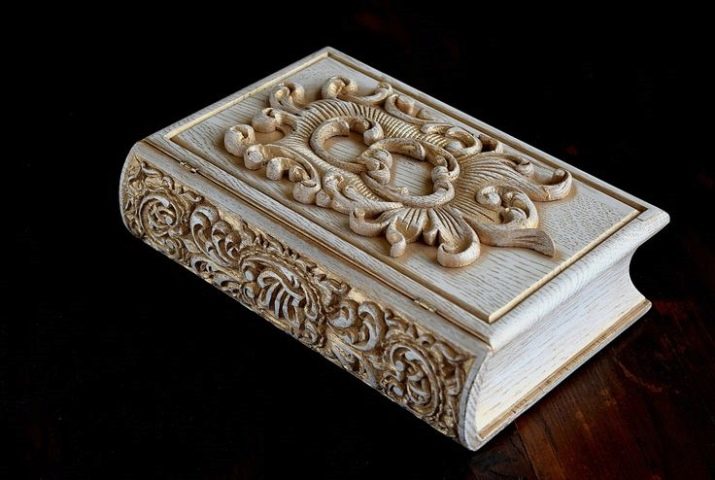
Using this technique, you can make a box for needlework or a box for tea.
Also original is the box in the form of a hexagon. If you decorate each face in different ways, you get a kind of mix.
A small box decorated with winter motives looks like an antique Christmas toy.
Interesting ideas
The simplest project for beginners is an ordinary round box, painted in a solid color, with a laconic design on the lid.
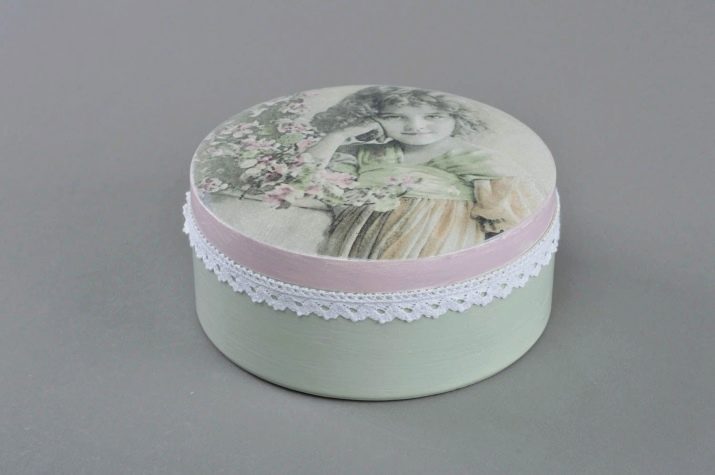
As you gain experience, hone your skills, you can move on to the embodiment of more complex ideas. For example, try to “age” objects with craquelure varnishes. This method will give things a touch of nobility and aristocracy.
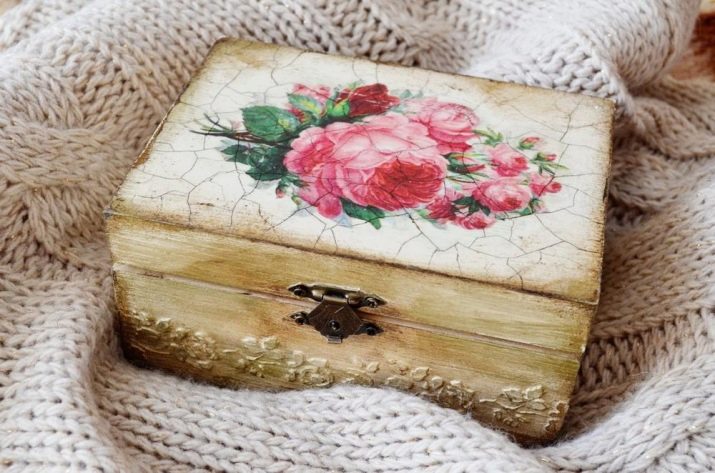
Or make a decor in the form of a mosaic of colored cardboard, leather, fabric, reflective mirror material.
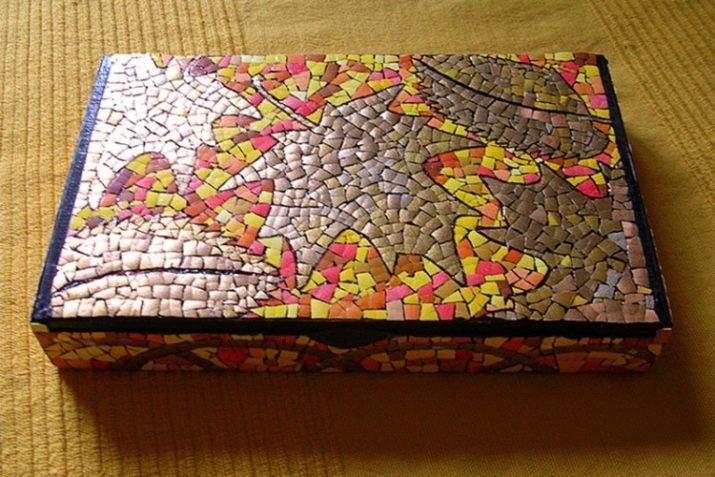
The decoupage technique opens up truly endless possibilities for decorating and updating the interior. Creative people present their best work at prestigious exhibitions.
For information on how to make an unusual decoupage of a box, watch the following video:








